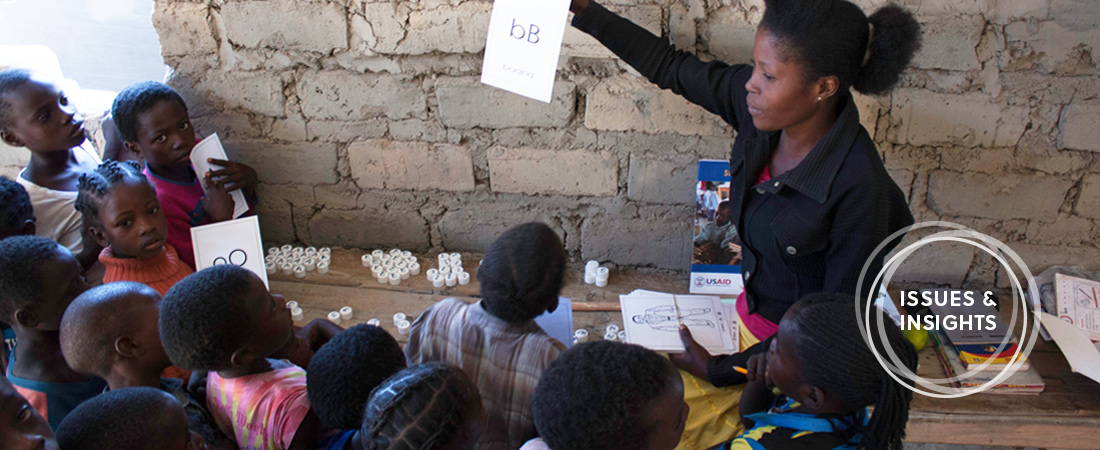Learning from Community Schools in Zambia

A community school teacher leads a literacy lesson in Chingola, Zambia.
For the past 25 years, community schools in Zambia have educated some of the poorest and most marginalized students in the country. These schools are typically free, run by parents, and often have far fewer resources—from books to trained teachers—than Zambia’s government-run and private schools.
But for all they lack, many community schools have delivered good educational results. In fact, data from Zambia’s Ministry of Education shows that students at some community schools perform on par with students at government-run schools.
EDC has been an active supporter of Zambia’s community schools since the movement started. In the early 1990s, EDC used interactive radio instruction to deliver literacy lessons to some of the first community schools, showing that students in rural Zambia could still receive a quality education. And for the past five years, EDC has supported the growth and sustainability of these schools through the USAID-funded Time To Learn project.
Here, EDC’s Stefan McLetchie talks about what can be learned from the community school movement.
Q: Why are community schools important?
McLetchie: At a time when many people think that more resources automatically translates into better results, some community schools show that you can get a good education even when there are limited resources.
For example, take one of the schools I visited—Chisomo Streamside Community School, which is in the Eastern Province. Classrooms were overcrowded, desks and books were in short supply, and about half of the teachers were volunteers. During the rainy season, the school often had to close because of flooding. But teachers used locally made teaching and learning materials and maintained students’ interest. Learning was happening in these classrooms.
Community schools can teach us a lot about what works in education, especially in low-resource environments. These lessons are applicable across Africa where the community school movement has taken root.
Q. How do community schools fit into Zambia’s educational system?
McLetchie: The first community schools were built in the 1990s to provide students living in rural communities with an opportunity to attend school. Now Zambia has over 3,000 community schools, and that number is growing. Some schools are located in sturdy buildings and educate hundreds of students; others consist of a teacher and only a handful of children, and class takes place outside.
Community schools have slowly become part of Zambia’s educational fabric. In 2011, the government formally recognized community schools, and now, it is common for government-trained teachers to teach at community schools. The Ministry of Education has also made concrete efforts to offer professional development to community school teachers, provide books to schools, and, in some instances, provide small grants and infrastructure support.
Q. What makes community schools successful?
McLetchie: Parents are really key to making community schools successful. In many cases, parents literally get the bricks and the thatch to build the school that their children will attend. A parent and community school committee hires teachers, buys resources, and takes care of the administrative needs of the school.
But in the most successful schools, parents are involved in more than just the administration of the school. They help their children with homework and read to them at home, and they visit the school to see what students are learning. Being engaged fosters a community of learning, and students thrive.
Q. How can community schools be improved?
McLetchie: I think we have just scratched the surface of what technology could do for these schools. We’ve already seen the impact we can have using tablets to teach literacy. Interactive audio instruction and radio-based education have also been used successfully in rural parts of the country.
But looking forward, I think we need to explore how simple, technology-based literacy assessments can be used in the classroom. We should also explore whether teacher professional development can be delivered via mobile phones or radio.
Q. What is one of the most important changes you have seen as a result of EDC’s work in Zambia?
McLetchie: It’s an exciting time to be working with community schools, and there’s still a lot left to be done. One of our main goals in Zambia was to shine more light on the community school movement. And we did just that. Time to Learn allowed a lot of the good work that was happening in community schools to be more visible. And I think that visibility has made a difference. Support for community schools has increased at the Ministry level, and they are taken more seriously now.